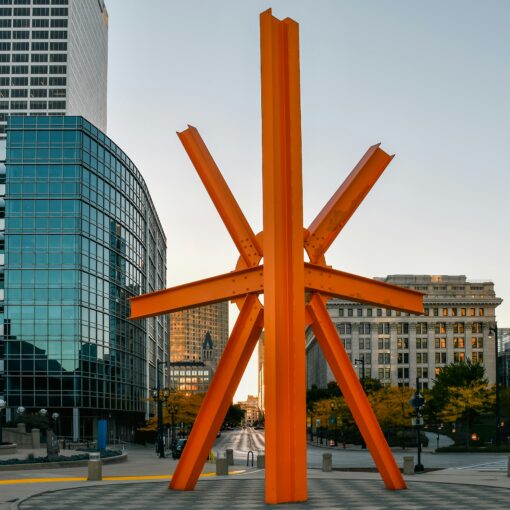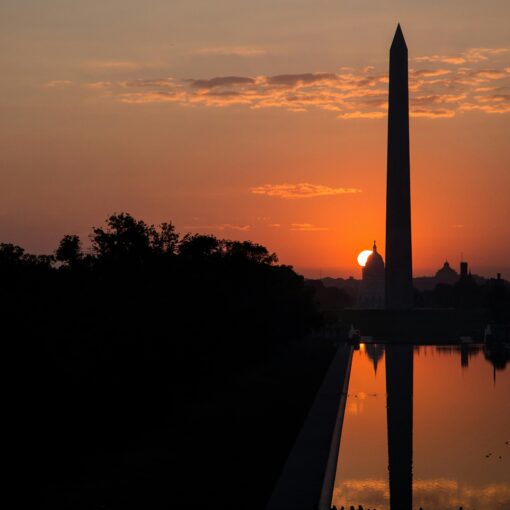Recent efforts by states to preempt local greenhouse gas or energy requirements have not only stymied climate action, they have also been wielded in an undemocratic way that undermines equity in climate policymaking.
State preemption of local law is nothing new, but its impact on procedural equity and distributional equity in city climate law merits critical examination. Procedural equity describes the process by which a policy is developed – who provided input, were frontline community voices elevated (or not), how were or weren’t those who stood to gain or lose from a proposed policy sought out and consulted? Distributional equity gets at outcomes – in short, does the policy benefit or cause harm to underrepresented communities or residents? Some efforts to enact state legislation preempting local initiatives can undercut procedural equity by preventing affected communities from playing a meaningful role in policy formation. And they could lead to less equitable distributional outcomes as well, both by excluding the voices that could raise substantive concerns and by enacting policies with unequitable impacts.
Two ongoing efforts to preempt local requirements aimed at reducing greenhouse gas emissions from buildings are instructive: the battle over natural gas bans and the proposed revision of New York City’s Local Law 97. The first is overt, blunt and wide-ranging, with state-wide preemption laws drafted so broadly that they could inhibit many local policies, including unintended or unforeseen ones. The second is far more tailored to the specifics of one particular local law, and was hidden from public view in a 4,000-page budget bill. What both have in common, however, is that they feature special interest groups advocating for statewide preemption laws aimed at city climate action through government officials that do not directly represent the locality or localities at which the preemption is aimed, nor the people who live there.
State Preemption of Local Natural Gas Bans: I’ve written on this blog in the past about the several state legislatures that have passed or are considering legislation that would preempt local building construction requirements based on the type of utility service that serves the building. These local construction requirements, which are colloquially referred to as “all-electric construction requirements” or “natural gas bans,” either prohibit most natural gas connections in new buildings or require that new buildings use only electric heating and cooling. In so doing, they aim to eliminate or greatly limit fossil fuel use in new buildings, which both reduces greenhouse gas emissions from the building sector (a top contributor to emissions in virtually all U.S. cities) and prevents investment in new natural gas distribution infrastructure. The movement to preempt local natural gas bans has only intensified since that writing, with four states now having passed a “ban-on-bans” via the state legislature and another dozen considering it. These statewide preemption laws are driven by a well-organized natural gas industry campaign, which has shopped the preemption law language (nearly identical across states) to friendly state legislatures and made campaign contributions on their behalf.
To be clear, a natural gas ban or all-electric construction code is not in and of itself an equity-centering solution. Building electrification can be carried out inequitably. (The building electrification movement is grappling with important questions about cost, displacement and gentrification, among other things.) The problem with statewide preemption here is that the state action, and industry influence driving it, occurs far from any local process that could or does account for community input. In short, gas industry groups and companies make campaign contributions to friendly legislators – who themselves often do not represent the state’s larger population centers – to rush through legislation that would preempt a wide range of local efforts to disfavor natural gas service to buildings. This effectively short-circuits procedural equity in communities that might otherwise choose, pursuant to a democratic and inclusive community process, to shift towards all-electric buildings. State preemption in other areas of the law also prevents local processes, of course; as Richard Briffault wrote, “all preemption laws are in tension with local democracy.” In the city climate policy context, some exercises of state preemption, including this one, take authority not only from the local government but from city residents, who are denied a forum to shape energy policy that will have redistributive and very personally-felt impacts, including on their energy bills, the habitability of their housing and the affordability of their communities. Community input on the development of equitable policies is an integral part of many climate policymaking processes. State preemption can do away with the opportunity for these important conversations. A natural gas ban or all-electric construction requirement also has the potential to improve distributional outcomes – if carefully designed to consider residents’ very real concerns – by reducing local air pollution resulting from fossil fuel combustion and catalyzing modern, efficient building practices for affordable housing units. State preemption of local natural gas bans precludes the possibility that such a GHG-reducing and potentially redistributive policy would be enacted at the local level.
New York’s Proposed Gutting of New York City’s Building Performance Standard: A more tailored effort to preempt local greenhouse gas requirements is unfolding in New York state. Here, a handful of sentences in Governor Cuomo’s proposed FY 2022 budget legislation (referred to as “Part R”) would dramatically undercut the building emissions reductions required by New York City’s building performance standard, Local Law 97. Under Local Law 97, most of the City’s largest buildings must achieve a carbon intensity standard – essentially a cap on their greenhouse gas emissions – beginning in 2024. A small allowance is made for compliance with the law through limited use of offsets and through the purchase of renewable energy credits (RECs) that serve New York City’s portion of the electric grid. Part R would dramatically change compliance options for Local Law 97 by allowing building owners to purchase RECs from anywhere in New York state, including RECs attributable to already-existing renewable generation. Expanding the allowable pool of RECs from which building owners can draw doesn’t only change the contours of Local Law 97 compliance at the margins; according to four environmental, architecture and urban planning groups, it would offer so many new RECs as to allow building owners to avoid any building energy improvements until at least 2030. (Part R is supported by New York City’s real estate industry.)
If successful, this element of the New York State budget proposal will undermine both procedural anddistributional equity. Local Law 97 was a heavily-negotiated law. The very limited allowance for RECs as a compliance tool – specifically, that those RECs serve the New York City area of the electric grid – was not a footnote but rather a central negotiating point among housing and environmental justice advocates, who would have preferred no REC compliance option, and real estate interests, who wanted flexibility under the law. The outcome, that RECs are allowed so long as they advance local green energy generation, is a direct reflection of the concerns that housing and environmental justice advocates brought to the table. The overriding of procedural equity that would be caused if Part R were to go into effect is bolstered by distributional outcomes that are inequitable: namely, that the new set of RECs allowed by Part R would cause fewer building retrofits to be carried out in New York City in favor of investment in renewable energy (possibly already-existing generation) far away from the City’s frontline neighborhoods that stand to gain in terms of jobs, air quality improvements and updated housing stock. The Climate Works for All coalition of environment justice groups, among others, has raised these concerns. The procedural and the distributional are intertwined – concerns raised by housing and environmental justice groups led to important substantive elements of Local Law 97, many of which are now threatened by Part R.
The precise line between areas of law appropriate for local requirements and those that merit a uniform, statewide approach will always be subject to debate – a debate that surely shifts depending on a debater’s preferred policy outcome. But, at the very least, the debate needs to address equity concerns – procedural and distributional. Local climate policy is heavily dependent on local input and must further not only GHG reductions but also a community-led transition away from fossil fuels and the equitable distribution of costs and benefits. As a consequence, state preemption questions should not only consider whether a state is, strictly speaking, on legally defensible grounds, but also at whether such preemption would make policy – whether state or local – less equitable.
Amy Turner is the Director of the Cities Climate Law Initiative at the Sabin Center for Climate Change Law at Columbia Law School.






